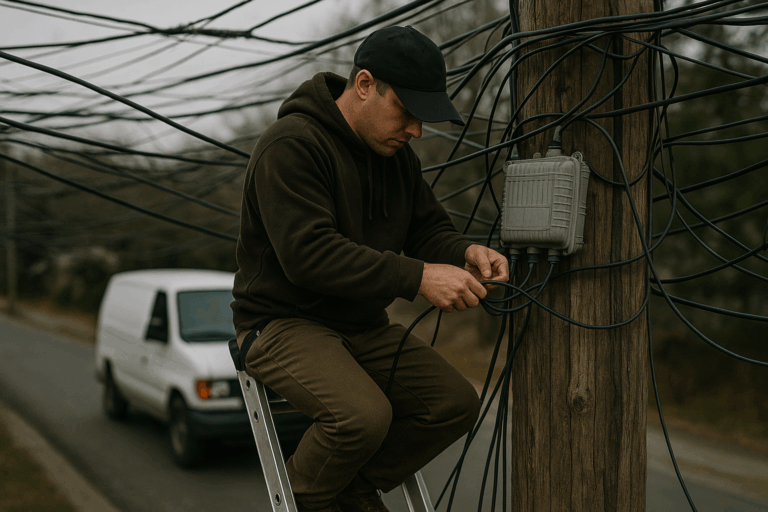Starlink + T-Mobile: What’s the Deal?
You’ve probably heard the buzz—Starlink and T-Mobile are joining forces, and no, they’re not starting a band called “Dead Zone Eliminators.” This partnership is all about obliterating those pesky dead zones where cell service dares not go, not necessarily singing about them. They first tested their satellite-to-phone text service during all the hurricane devastation in the southern states this fall. It was a success, needless to say, so that opened up doors for bridging the gaps in dead zones and downed cell tower service areas. Let’s dig into what it means, who it’s for, and whether your phone is ready to beam up.
Will This Affect My TV Antenna Like 5G Can?
In short, nope! Starlink and T-Mobile’s satellite-to-cell service operates in the mid-band PCS spectrum (1910-1995 MHz), far removed from the TV broadcast frequencies your antenna uses. Since TV signals no longer go above 608 MHz, there’s no overlap to worry about. Unlike the interference hiccups some folks experience at times with early 5G at a very close 614 MHz, this satellite-to-cell service won’t mess with your over-the-air TV reception. So, rest easy and keep enjoying your free antenna TV—no satellites are crashing this party. Crisis officially averted!
Can Current T-Mobile Subscribers Try It?
Not quite yet, my eager tech explorer. T-Mobile has opened up registration for a beta program of its satellite-to-cell service, set to launch in early 2025. That means if you’re a T-Mobile postpaid customer and your phone is compatible, you could be among the first non-emergency users to test this groundbreaking tech.
This service targets areas where cell towers tap out—think cabins, deserts, or those long road trips where “No Signal” becomes your travel companion. So, if you’re off-grid or just want to impress your friends at the next campfire, this one’s for you.
What About Hotspots and 5G?
Hold your space boots! This isn’t here to replace T-Mobile’s 5G network or your trusty mobile hotspot—at least not yet. Initially, the focus will be on text messaging in no-coverage zones. Voice calls and data? Those upgrades are coming down the line like the second season of your favorite show—exciting, but not here yet.
The idea is to fill in the gaps, not take over, so think of it as a trusty backup rather than a primary connection.
How Much Will It Cost?
Here’s the interesting part: T-Mobile says it’ll be included in many existing plans for free. Yes, you read that right—free. Of course, we’re guessing this means you’ll need one of those fancy “Magenta” or premium plans. For the rest of us budget-conscious folks? You might have to shell out a bit more, but T-Mobile hasn’t spilled all the beans on pricing yet.
A Quick History Lesson: From Satellites to Cellphones
Starlink has been launching satellites into low Earth orbit faster than a Black Friday shopper grabs a TV. With over 4,500 satellites already in the sky, they’ve been beaming high-speed internet to rural and remote areas since 2019.
Meanwhile, T-Mobile has spent years flexing its 5G muscles and realized Starlink could be the missing puzzle piece to cover every nook and cranny of the U.S. Together, they’re like peanut butter and jelly—but for connectivity.
Where’s It All Headed?
This isn’t just about fixing those frustrating “No Service” zones. Starlink and T-Mobile are laying the groundwork for a future where your phone works anywhere—mountaintops, deserts, oceans, and maybe even in the great vacuum of space. Okay, maybe not space (yet), but you get the idea.
Imagine texting from the middle of nowhere or calling your mom from a fishing boat in the middle of Lake Michigan. They’re building a world where “dead zones” are a thing of the past.
The Bottom Line
Starlink + T-Mobile is the team-up we didn’t know we needed, and it’s set to be a game-changer. Whether you’re a die-hard T-Mobile fan or just someone tired of seeing “No Signal,” this partnership is worth keeping an eye on.
Beta testing starts in 2025, so get your compatible phones ready and maybe consider upgrading your plan. Better coverage is literally on the horizon—and in orbit





